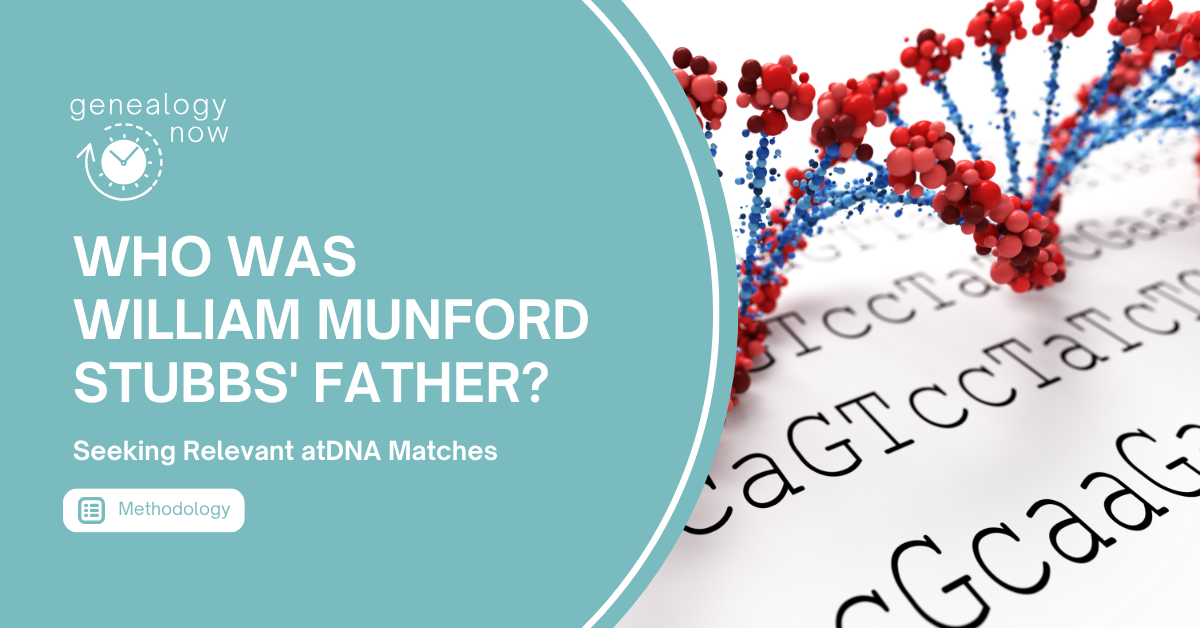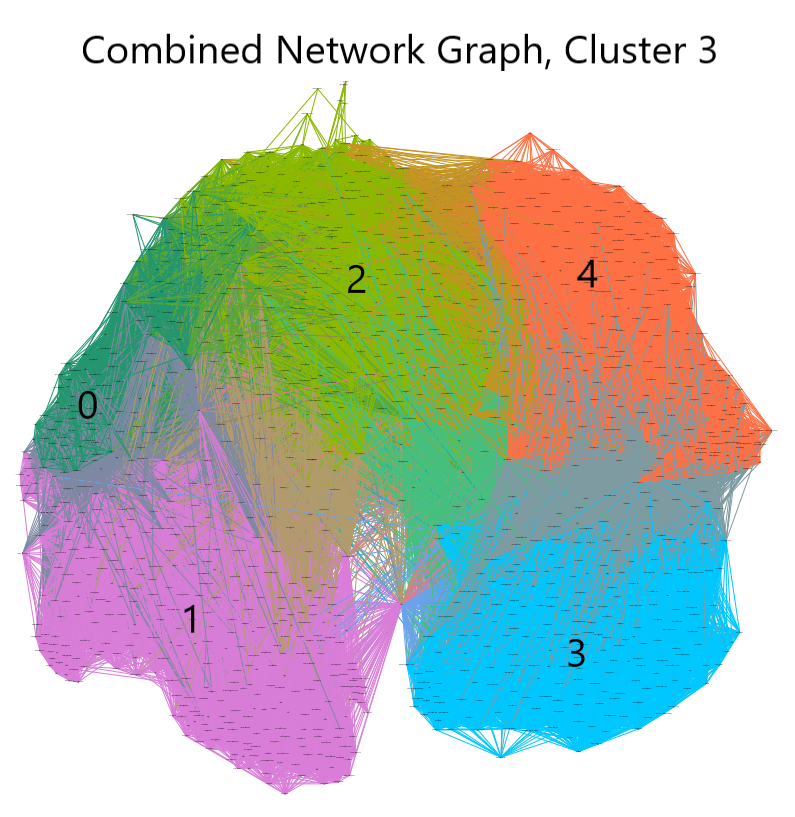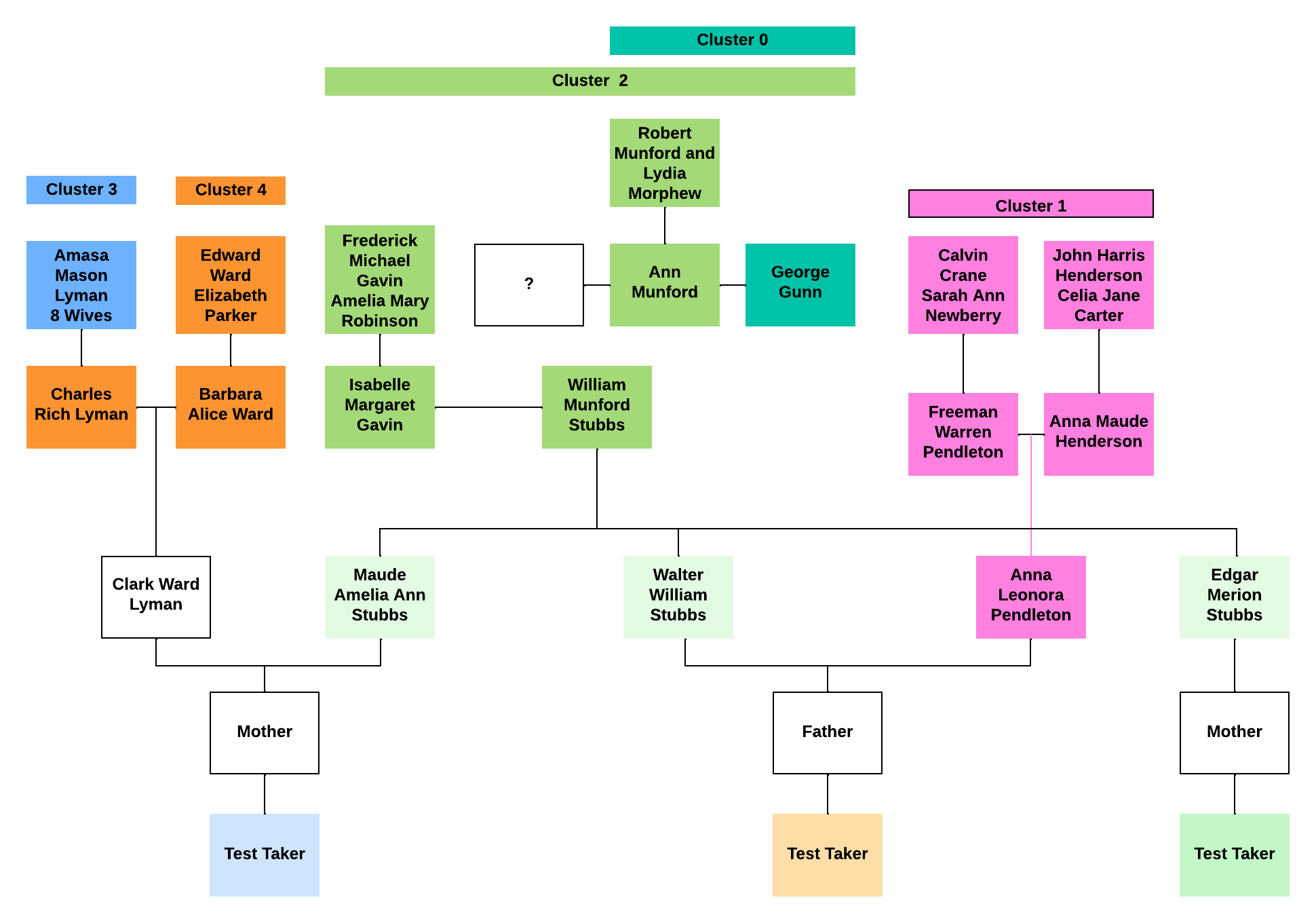
In my last two posts about my ongoing project to discover who fathered William Munford Stubbs, I shared that Y-DNA test results revealed two possible surnames: Dale and Brock. I then discussed my methodology for finding men of the correct age with those surnames who lived within a five-mile radius of Wymondham, where I hypothesized Ann lived in 1857 when William was conceived.
An additional strategy I utilized was to look for the Brock or Dale surnames among autosomal DNA matches. The target ancestor for this project is well within the 6-8 generations for which autosomal DNA is valuable, and both males and females inherit autosomal DNA from their parents, so the number of autosomal matches who go back to William’s paternal line should theoretically be larger than the five Y-DNA matches I have to work with.
Using the atDNA for test takers who descend from independent child lines of the research subject can maximize the coverage of the research subject’s genome and help discover relevant matches for the research project. Three descendants from three different children of the research subject William Munford Stubbs graciously shared their DNA match lists with me for analysis. The test takers are second cousins who all share the expected amounts of DNA for their second-cousin relationship with one another.
William’s unknown father is the test takers’ great-great-grandfather. Descendants of his unknown father will be 3rd cousins with the test takers and will likely share an average of 35-73 cM of inherited DNA with one another.[1] To identify DNA matches who descend from the line of interest, I downloaded match data for each test taker using the DNAGedcom Client and hired my colleague to use the data to create a Gephi network graph that included the data for all three test takers. While the network graph was in process, I used the files I had downloaded to seek occurrences of the Brock and Dale surnames on the trees of my three test takers’ DNA matches.
Using GWorks to Seek the Brock and Dale Surnames
The familial surnames suggested by the Y-DNA test results of William’s great-grandson are Dale and Brock, with Dale being the surname for the closest Y-DNA match. If either of the surnames suggested by the Y-DNA test results is the correct surname for William’s father, perhaps that surname might be discovered among autosomal DNA matches as well. To seek these surnames, I used Gworks, which is a tool from DNA Gedcom that sorts and filters DNA match data uploaded by users to generate surname lists.
No occurrences of the Dale surname were discovered among DNA matches for the three test takers. While the Brock name did appear in a few places, ancestors with the Brock name did not originate in England, and many of the matches with this name in their trees also shared a common ancestor on a different side of the test taker’s family tree.
I’m not certain that this eliminates these surnames as possibilities for William’s father – it could just mean that no descendants from these lines have taken an autosomal DNA test. Since I did not discover the surnames of interest among the DNA matches, I needed to analyze the network graph to see if I could find matches that descend from William’s father’s line.
Network Graph Analysis
Once the network graph was created, my colleague identified relevant clusters by noting which included DNA matches matching the three test takers. This narrowed down the amount of data I would be working with. She then subclustered the cluster that appeared to be most relevant to help with the process of identifying matches who might go back to William’s unknown father’s line. This resulted in five clusters. My initial hypothesis was that these five subclusters could represent DNA matches descending from William Stubbs and his wife Isabelle Gavin, and clusters of matches who descend from each of their parental lines. Cluster analysis revealed results that were quite different from what was expected.

Subcluster 3-2 included atDNA matches descending from William’s maternal line—including his grandparents and his step-siblings—and his wife’s parents. Cluster 3-0 was related to cluster 3-2, with a few matches descending from William’s maternal grandparents, but with most matches descending from William’s mother and stepfather—the Gunn line. Subclusters 3-1, 3-3, and 3-4 were not directly related to William’s family at all. They included matches descending from the ancestors of two of William’s children’s spouses. They may have been included in the cluster because these people all lived in Parowan, Utah, where many of the founding families intermarried, resulting in complicated relationships among descendants.

I hypothesized that since subcluster 3-2 includes atDNA matches who descend from multiple generations of both William and his wife Isabelle’s families, then perhaps atDNA matches who descend from William’s unknown paternal line would also appear in this cluster.
Subcluster 3-2 is comprised of 274 atDNA matches. Many do not have trees associated with their Ancestry DNA test results. A strategy was needed to methodically narrow the possible relevant matches down to those who might have descended from William’s unknown father’s line. Hypothetically, atDNA matches identified as descending from the Munford, Gunn, or Gavin lines would not share atDNA with matches descending from the unknown father’s line. Matches that share atDNA with a person that had been identified as descending from one of these known lines were eliminated one by one until the pool of unidentified matches from subcluster 3-2 was narrowed down to forty-four.
Seeking Pedigree Triangulation
DNA matches that appear in the same genetic network can share a common ancestor. Seeking the common ancestor between two or more DNA matches is known as pedigree triangulation. By examining the trees of the forty-four matches identified in Cluster 3-2 of the combined network graph, it might be possible to discover a paternal ancestor for William Munford Stubbs.
Studying the trees attached to the atDNA test results for the DNA matches of interest in Cluster 3-2 resulted in two common surnames among three matches: Neave and Blythe. Each of these ancestors lived in Norfolk County, England. Some lived in Wymondham and some in neighboring Wicklewood. Building back the DNA matches’ trees to the mid-1700s did not result in the discovery of common ancestors for the matches.
A Plan for Ongoing Research
I was working on this project during the course of a Research Like a Pro Study Group, and time did not permit further study of the DNA matches in Cluster 3-2. Future DNA research will be dedicated to building out the trees of additional matches and contacting matches without trees in search of common ancestors for the cluster. I will also spend time working on the tree of the closest Y-DNA match to see if I can trace down from an earlier generation to discover a family who lived in the vicinity of the Munford family in Wymondham.
Before tackling these tasks, I will be working on tracing the descendants of Robert Dale, as discussed in my last post. His family lived near the Munford’s, and I want to find living people who can be asked to take an autosomal (and perhaps a Y) DNA test. If people in this family match my test takers, that will get me one step closer to solving this case.
[1] Blaine Bettinger and Johnny Perl, “The Shared cM Project 3.0 tool v4,” DNA Painter (https://dnapainter.com/tools/sharedcmv4 : accessed 5 October 2020), average shared cM for 3rd -4th cousins.
